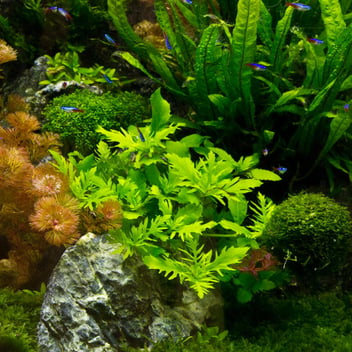In the world of aquarium enthusiasts, the discussion around incorporating live plants into tank setups tends to generate a kaleidoscope of opinions. While the benefits of live aquarium plants are often lauded, a contrarian perspective offers a comprehensive understanding of both the advantages and the challenges they present. This perspective does not seek to dissuade the use of live plants but rather to encourage a more informed and balanced approach to their integration into aquariums.
The Unseen Value of Live Aquarium Plants
Live plants are not merely decorative elements; they play a crucial role in enhancing the water quality and creating a natural habitat for fish. By absorbing harmful toxins and releasing oxygen through photosynthesis, they significantly improve the aquatic environment. The aesthetic appeal they offer goes beyond mere beauty, contributing to the psychological well-being of both fish and their human caretakers. However, this unseen value is often overshadowed by the perceived high maintenance and complexity of keeping live plants healthy.
Challenges and Maintenance of Aquatic Flora
The primary critique of incorporating live plants in aquariums centers around their maintenance requirements. Unlike artificial plants, live plants need specific lighting, nutrients, and CO2 levels to thrive. This can introduce an added layer of complexity and expense to aquarium care. Furthermore, failing to meet these requirements not only affects the health of the plants but can also adversely impact the tank's ecosystem. It's a delicate balance that requires knowledge and attentiveness, deterring some enthusiasts from embracing live plants.
Balancing Aesthetics with Ecosystem Health
While live plants undeniably enhance the visual appeal of aquariums, their integration must be done thoughtfully to ensure ecosystem health. Overcrowding, for instance, can lead to oxygen depletion during the night when photosynthesis ceases, thus affecting fish health. Moreover, certain plants can become invasive, outcompeting others for resources and potentially leading to an unbalanced ecosystem. The contrarian perspective emphasizes the importance of strategic plant selection and positioning to maintain both aesthetics and a healthy, balanced aquatic environment.
Understanding the Oxygenation Equation
The belief that live plants universally improve oxygen levels in aquariums is a simplification that overlooks the complexity of the oxygenation equation. While plants do release oxygen during the day, they consume it at night, which can lead to significant fluctuations in oxygen levels. This can be particularly problematic in densely planted tanks or those with high fish populations. Understanding the dynamics of oxygen production and consumption is vital for maintaining a stable environment conducive to both plant and fish health.
Stress Reduction vs. Habitat Complexity
The provision of hiding spots and a more naturalistic environment by live plants is often cited as a stress reducer for fish. However, the introduction of plants also increases habitat complexity, which can be a double-eded sword. For shy or territorial species, excessive complexity can lead to increased stress and aggression. Thus, while live plants can offer benefits in terms of stress reduction, their impact is highly species-dependent, requiring careful consideration of the specific needs and behaviors of the tank's inhabitants.
Creating a Self-Sustaining Aquatic Ecosystem
One of the most compelling arguments in favor of live plants is their ability to contribute to a self-sustaining ecosystem. By recycling nutrients and stabilizing water parameters, they can reduce the need for chemical interventions and frequent water changes. However, achieving this balance is not without its challenges. It requires a deep understanding of the interplay between plant and animal life, as well as the patience to allow the ecosystem to mature. The contrarian view acknowledges the potential of live plants to create a self-sustaining environment but cautions against underestimating the knowledge and effort required to achieve this ideal.
In conclusion, while the benefits of incorporating live plants in aquarium setups are manifold, a contrarian perspective reveals the complexities and challenges that accompany this choice. Understanding these nuances is crucial for making informed decisions that align with the specific needs of your aquatic ecosystem. Whether you choose to embrace live plants fully, opt for a combination of live and artificial, or forgo them altogether, the key is to prioritize the health and well-being of your aquatic inhabitants. By weighing the pros and cons and considering the unique dynamics of your tank, you can create a thriving aquatic environment that is both beautiful and balanced.
Additional Resources:
All About Live Aquarium Plants
Low Light Aquarium Plants - Guide To Thrive
The Ultimate Hobbyist Guide To Aquarium Care
Canton Aquatics Hard To Kill Aquarium Plant Bundle




Leave a Comment